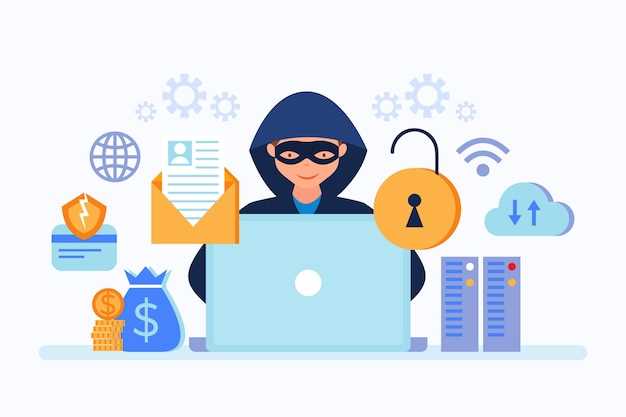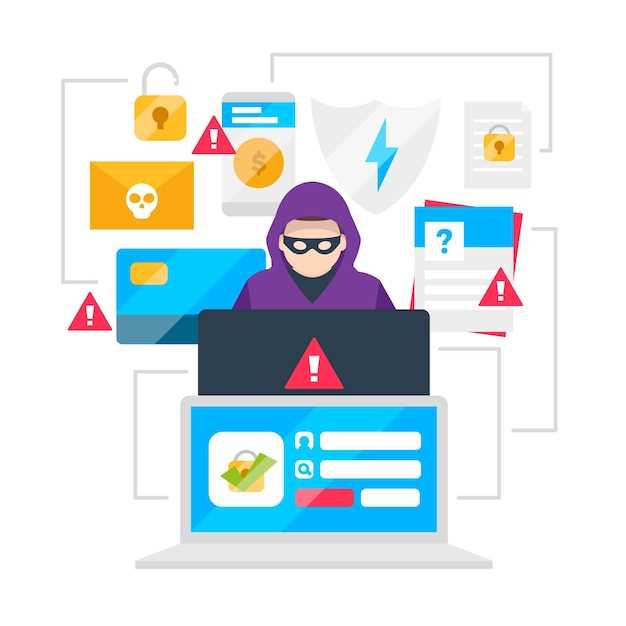In today’s interconnected landscape, safeguarding digital assets is crucial. Multiple barriers protect vital information. Yet, breaches can happen in an instant. Prevention is not merely a technical challenge; it is a fundamental aspect of operations. The stakes are high, as the consequences can be severe.
Many organizations remain unaware of lurking dangers until it is too late. Security measures can often feel overwhelming. However, taking proactive steps leads to a more secure environment. With the right knowledge, one can identify weaknesses. Mitigating risks hinges on understanding both common issues and innovative solutions.
It’s vital to create a culture that prioritizes vigilance. Awareness in employees makes a significant difference. Education is key to minimizing risks. Regular updates and training help everyone recognize the signs of potential danger. Moreover, integrating consistent protocols ensures a comprehensive approach.
As technology continues to evolve, so too do the risks involved. Maintaining an agile response strategy is essential for resilience. By investing time and resources into preventive measures, organizations can significantly enhance their defense mechanisms. It is not just about technology; it encompasses people, processes, and mindset. Emphasizing a proactive instead of a reactive stance truly makes a difference.
Understanding Cybersecurity Threats and Solutions

In today’s digital landscape, the landscape of online perils is constantly evolving. Understanding these risks is crucial for maintaining digital safety. They can impact anyone, from large corporations to small ventures. A well-rounded knowledge helps in the prevention and mitigation of potential harm.
Various malicious actors exploit weaknesses for their gain. These activities can lead to significant financial losses and reputational damage. Types of hazards often include:
- Phishing attacks
- Malware infections
- Ransomware incidents
- Data breaches
For instance, phishing attempts trick users into revealing sensitive information. This can happen through deceptive emails or fraudulent websites. Likewise, malware can silently infiltrate a network, compromising performance and security.
To combat these challenges, a multi-layered defense approach is necessary. Solutions may include:
- Regular software updates
- Robust password management
- Employee training and awareness programs
- Use of firewalls and antivirus software
Implementing these measures creates a fortified environment, reducing the likelihood of successful attacks. Engaging in proactive measures is vital. This creates an atmosphere of vigilance, making it harder for nefarious actors to find vulnerabilities.
Robust incident response plans are also key components. They help to handle any breaches or attacks effectively when they occur. Quick action minimizes damage, and ensures recovery is smooth.
Ultimately, knowledge about these aspects empowers everyone involved. It fosters a culture of security within every organization, enhancing overall resilience in the face of such challenges.
Types of Cybersecurity Threats

In today’s digital landscape, numerous dangers loom over individuals and organizations alike. These menaces can emerge from various sources and take many forms. Each type has its own unique approach and impact. Recognizing these potential risks is crucial for implementing effective safeguards. Awareness is the first step towards creating a secure environment.
One prevalent form includes malicious software. This software can infiltrate systems without a user’s knowledge. It can steal sensitive data or disrupt operations. Another common issue stems from phishing attempts. Fraudulent emails trick users into revealing personal information. Such tactics can lead to severe financial and reputational damage.
Social engineering represents a more manipulative side of modern threats. Cybercriminals exploit human psychology to gain unauthorized access. They can impersonate trusted sources or create a false sense of urgency to deceive victims. Moreover, denial-of-service attacks systematically overload systems to render them inoperable. This can halt business operations and lead to significant losses.
| Type | Description | Impact |
|---|---|---|
| Malware | Software designed to harm or exploit devices. | Data theft, operational disruption. |
| Phishing | Fraudulent attempts to obtain sensitive information. | Identity theft, financial loss. |
| Social Engineering | Psychological manipulation to obtain confidential information. | Unauthorized access, data breaches. |
| Denial-of-Service | Overloading services to make them unavailable. | Operational downtime, revenue loss. |
These examples illustrate just a fraction of the risks that exist. Staying informed about the various challenges allows individuals and organizations to respond effectively. Implementing appropriate measures becomes imperative in this evolving landscape. Awareness and preparation are vital to minimize potential impacts.
Understanding Data Breaches and Their Impact
Data breaches represent a significant challenge in today’s digital landscape. They can occur in various forms and affect organizations of all sizes. The consequences often extend beyond mere financial loss. Trust is shattered, and reputations are put at risk. Each incident carries the potential for serious repercussions.
When unauthorized access occurs, sensitive information can be exposed. This includes personal identifiers, financial details, and proprietary data. Such revelations can lead to identity theft, fraud, and a host of legal complications. Companies may face lawsuits or penalties. Additionally, customers may take their business elsewhere.
A single breach can lead to substantial operational disruptions. Time and resources must be allocated towards incident response and recovery. This often distracts from daily operations and strategic initiatives. Long-term damage may manifest as increased scrutiny from regulators and heightened security demands.
In a world where data has become incredibly valuable, safeguarding it is more critical than ever. Organizations must prioritize awareness and foster a culture that embraces vigilance and proactive measures. While technological solutions are essential, human behavior plays an equally vital role in mitigating risks and enhancing security posture.
Common Forms of Cyberattacks
In today’s digital landscape, malicious activities targeting individuals and organizations have become increasingly common. Understanding these attacks is crucial. They often manifest in various ways. Awareness can make a substantial difference in countering such actions.
Phishing is one of the most prevalent tactics employed by attackers. It typically involves deceptive emails designed to trick the recipient into revealing sensitive information. These emails may appear legitimate, featuring trusted logos and familiar language. Attackers aim to create a sense of urgency, prompting hasty decisions.
Ransomware poses a significant risk as well. This type of malware encrypts files, rendering them inaccessible until a ransom is paid. This has become a lucrative venture for cyber criminals, as many victims lack proper backups or the means to recover their data independently. The impact can be devastating, with operations ground to a halt and sensitive information at stake.
DDoS (Distributed Denial of Service) attacks flood a target’s server with excessive traffic. This overload disrupts services, causing outages and slowdowns. These attacks can last for hours or even days, severely affecting functionality and reputation. They not only hinder accessibility but can also lead to significant financial losses.
Malware encompasses a wide range of harmful software, including viruses, worms, and trojans. It often infiltrates systems unnoticed, initiating damage or gathering intelligence over time. Once inside, it can lead to data loss, unauthorized access, and even enlisting computers into botnets. This silent infiltration makes it particularly dangerous.
Understanding these tactics is vital. Countless organizations suffer daily due to these malicious actions. By staying informed and adopting preventative measures, one can greatly reduce the risks associated with such threats.
Identifying Insider Threats
In today’s evolving landscape, recognizing the potential dangers from within is crucial. Employees can unintentionally or intentionally cause harm. This stems from a range of motivations, whether personal grievances or financial gain. Vigilance is key, but what does that mean in practice? Understanding behavior signals can be pivotal.
Monitoring access to sensitive information is essential. Frequent changes in work performance may signal distress. An employee who hesitates to cooperate with security protocols can raise red flags. Additionally, sudden interest in confidential data or systems is often a cause for concern. It’s about piecing together seemingly innocuous actions.
Furthermore, fostering an environment of open communication aids in detection. When individuals feel comfortable sharing their concerns, it’s easier to pinpoint unusual behaviors. Engaging in regular training also plays a vital role in awareness. Creating a culture of trust often leads to early warnings. Ultimately, combining observation and employee interaction can unveil potential issues.
Social Engineering Tactics Explained
Manipulative techniques used to deceive individuals are more common than many realize. Often, these strategies exploit natural human emotions, such as trust or fear. Victims may find themselves in compromising situations without understanding how they got there. Information going astray can happen quickly, leading to significant repercussions.
One common approach is phishing, where attackers impersonate legitimate entities to gather sensitive data. They often craft emails that appear authentic, targeting specific individuals through familiarity. This could involve a fake invoice or alert that prompts immediate action. Consequently, a seemingly innocent click can have dire consequences.
An alternative tactic is pretexting, which relies on creating a fabricated scenario that encourages the target to divulge information. Scammers may pose as authority figures or trusted sources, thereby fostering a sense of legitimacy. Trust becomes their weapon, as victims inadvertently share confidential details. Such scenarios highlight the vulnerability inherent in human interactions.
Another method is baiting, which entices individuals with the promise of free items or opportunities. This technique plays on the innate desire for gain, often leading users to compromised websites or downloads. The allure can be powerful, making it easy for victims to overlook potential risks. Unbeknownst to them, a simple temptation can lead to significant security breaches.
Lastly, tailgating is a physical approach where an unauthorized person gains access by following someone else into a secure area. This often occurs in workplaces where access controls are lax. A moment of distraction can be all it takes for an outsider to slip in unnoticed. Such scenarios emphasize the need for awareness at all levels.
Malware: Types and Prevention Strategies
Malware represents a significant challenge in the digital landscape. It encompasses various malicious programs designed to cause harm, steal information, or disrupt operations. Understanding the different types is crucial. Each category has unique characteristics and methods of infiltration. A proactive approach can dramatically reduce risks.
There are several major types of malware:
- Viruses
- Worms
- Trojans
- Ransomware
- Spyware
Viruses attach themselves to legitimate software, spreading as users share files. Worms, on the other hand, replicate independently across networks, consuming bandwidth and resources. Trojans disguise themselves as harmless applications but compromise systems upon execution. Ransomware encrypts critical data, demanding payment for access, while spyware stealthily monitors user activities, often leaking sensitive information.
So, how can one effectively counter these digital menaces?
Implementing a multi-layered security approach is key. Regular software updates can patch vulnerabilities that malware exploits. Moreover, employing robust antivirus solutions assists in detecting and removing threats before they cause damage. User education plays a vital role; awareness of phishing schemes and suspicious attachments can prevent infections. Regular backups ensure that data remains secure, even in the event of an attack.
The combination of technological tools and informed personnel creates a formidable defense against malware, allowing individuals and organizations to navigate the digital landscape with confidence.
Best Practices for Safeguarding Your Business

In today’s digital landscape, securing sensitive information is paramount. Every organization must adopt effective measures to shield itself from potential harm. Simple steps can make a significant difference. Continuous vigilance is key. The evolving nature of challenges demands proactive strategies that adapt over time.
Establishing strong access controls is critical. This includes implementing multi-factor authentication to ensure that only authorized personnel can access sensitive data. Regular updates to software and systems mitigate vulnerabilities. Whenever possible, encrypt information both in transit and at rest, providing an additional layer of defense against unauthorized access. Similarly, conducting frequent training sessions for employees raises awareness and improves responsiveness to potential incidents.
Moreover, it is essential to develop a comprehensive response plan in case of incidents. Having a structured approach not only minimizes the impact but also enables swift recovery. Regular drills can enhance preparedness, ensuring that everyone knows their role. Engaging with reliable external partners can also augment internal efforts, offering expertise and support when needed.
In conclusion, maintaining a robust security posture requires dedication and an evolving approach. By embracing these recommendations, organizations can not only navigate risks but also build resilience against potential disruptions.
Implementing Strong Access Controls
Control over who can access critical information is vital. It safeguards assets and ensures that sensitive data remains confidential. A well-structured approach to access rights enhances not only security but also accountability. In today’s digital environment, implementing robust access measures is non-negotiable.
First, it’s important to define user roles clearly. Each person should have access only to the information necessary for their responsibilities. This principle is known as least privilege. By applying it, organizations limit potential risks. Additionally, access levels should be regularly reviewed and adjusted when needed.
Utilizing multifactor authentication adds another layer of defense. It requires users to provide multiple forms of verification before granting access. This method significantly minimizes the chances of unauthorized entry. Moreover, using strong and unique passwords is crucial to further enhance security.
Monitoring access logs should not be overlooked. Keeping track of who accesses what helps identify anomalies. In case of suspicious activity, organizations can respond swiftly. Furthermore, training employees about security protocols is equally important. Regular workshops can reinforce the importance of following established procedures.
Ultimately, establishing strong access controls is a dynamic process. It requires consistent evaluation and adaptation. As new technologies emerge, so do the potential vulnerabilities. Therefore, remaining vigilant and proactive in implementing these controls is paramount for safeguarding valuable assets.
Importance of Regular Security Audits
Conducting routine evaluations of system vulnerabilities is crucial. These assessments help identify weaknesses before they can be exploited. In today’s world, the landscape of risks is ever-evolving. It is important to stay ahead of potential issues. Regular check-ups can make a significant difference.
When businesses overlook these evaluations, they leave room for errors. Hidden flaws may linger unnoticed, allowing malicious entities to take advantage. A single breach can lead to serious consequences. This can include financial loss, reputational damage, and legal ramifications.
- Increases awareness of potential flaws
- Enhances overall system performance
- Builds trust with clients and partners
- Helps maintain regulatory compliance
By applying consistent assessments, organizations can not only shore up their defenses but also foster a culture of vigilance and responsibility among employees, ensuring everyone understands their role in safeguarding sensitive information.
Moreover, these evaluations often reveal patterns of recurring issues. Addressing them systematically can lead to long-term solutions. Security audits act as a compass guiding you through uncertainty. They provide insight into what strategies are working and what needs rethinking.
- Schedule assessments regularly, at least once a year.
- Engage third-party experts for an unbiased perspective.
- Review findings and develop actionable plans for improvements.
- Continuously monitor the effectiveness of implemented strategies.
In conclusion, regular evaluations serve as a foundation for ongoing success. They empower organizations to mitigate risks effectively and build resilience over time.
Video:
How to Protect Your Data Online
How to Protect Your Data Online by NOVA PBS Official 1,046,755 views 10 years ago 3 minutes, 53 seconds
Q&A:
What are the most common cybersecurity threats that businesses face today?
Businesses today face a variety of cybersecurity threats, including phishing attacks, ransomware, data breaches, and insider threats. Phishing attacks involve tricking employees into revealing sensitive information, often through deceptive emails. Ransomware is a type of malware that encrypts a company’s data, demanding payment for decryption. Data breaches occur when unauthorized individuals access protected information, often leading to significant financial and reputational damage. Insider threats can come from employees, contractors, or partners who intentionally or unintentionally compromise security protocols. To address these threats, businesses must implement comprehensive cybersecurity measures and employee training programs.
How can businesses protect themselves from ransomware attacks?
To protect against ransomware attacks, businesses should implement a multi-layered security approach. First, regular backups of critical data should be performed and stored in a secure location, ideally offline or in the cloud. It’s also essential to keep software and systems updated to patch vulnerabilities that ransomware could exploit. Additionally, employee training on recognizing phishing attempts and suspicious links is crucial, as these are common entry points for ransomware. Finally, having an incident response plan in place can help businesses react swiftly in case of an attack, minimizing downtime and potential data loss.
What role does employee training play in cybersecurity?
Employee training is a key component of any effective cybersecurity strategy. Humans are often the weakest link in security, making it essential to educate staff about potential threats and best practices. Training empowers employees to identify phishing emails, use strong passwords, and understand the importance of securing sensitive data. Regular training sessions and simulated phishing exercises can enhance awareness and preparedness. A culture of cybersecurity consciousness within the organization can significantly reduce the likelihood of successful attacks, as employees become more vigilant and proactive in safeguarding the company’s digital assets.
What are the best practices for creating a strong cybersecurity policy?
A strong cybersecurity policy should start with a comprehensive risk assessment to identify valuable assets and potential vulnerabilities. The policy should outline clear roles and responsibilities for employees at all levels regarding data security. Essential elements to include are password management guidelines, rules for accessing sensitive information, incident reporting procedures, and protocols for remote work. Regular updates and revisions to the policy are necessary to adapt to evolving cyber threats. Lastly, the importance of ongoing training and secure technology usage should be emphasized to maintain a robust cybersecurity posture.
How can small businesses ensure they comply with cybersecurity regulations?
Small businesses can ensure compliance with cybersecurity regulations by first familiarizing themselves with applicable laws and standards, such as GDPR, HIPAA, or PCI DSS, depending on the industry. Conducting regular audits and risk assessments can help identify gaps in compliance. It’s advisable to designate a compliance officer or team responsible for staying updated on regulatory changes and implementing necessary measures. Additionally, small businesses should invest in adequate cybersecurity tools that help meet compliance requirements, such as data encryption and secure access controls. Participating in industry associations or seeking legal counsel can also provide valuable guidance on maintaining compliance.
What are the most common cybersecurity threats that businesses face today?
Businesses today face a variety of cybersecurity threats that can compromise their sensitive data and operational integrity. The most common include phishing attacks, where attackers trick employees into revealing personal information; ransomware, which encrypts data and demands payment for its release; malware infections that can disrupt operations and steal data; insider threats from disgruntled employees or negligent staff members; and denial-of-service attacks that overwhelm systems and disrupt service availability. Understanding these threats is crucial for developing an effective cybersecurity strategy.
What essential best practices should my business implement to improve cybersecurity?
To enhance cybersecurity, businesses should adopt several essential best practices. First, implement robust security policies and procedures that outline acceptable use and data protection measures. Regular employee training on recognizing phishing attempts and safe internet practices is vital. Next, ensure that all software and systems are up to date with the latest security patches. Additionally, using strong, unique passwords alongside multi-factor authentication can help protect accounts. Regularly backing up data and keeping these backups secure can be invaluable in the event of a ransomware attack. Finally, consider conducting periodic security audits and vulnerability assessments to identify and address potential risks proactively. By taking these measures, businesses can significantly reduce their exposure to cyber threats and enhance their overall security posture.
